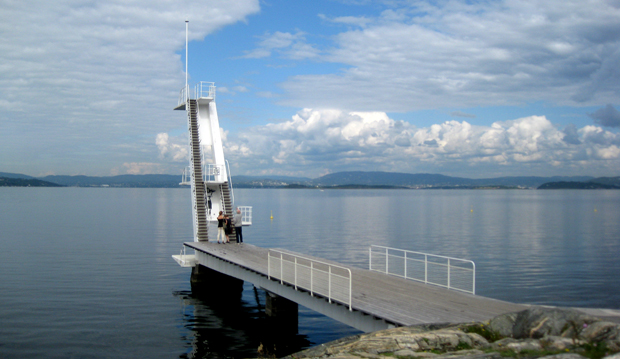E3WDM
Oslo, contrary to most western European cities, is experiencing an era of rapid growth. Projections over coming decades suggest that Oslo will increase by 200 000 inhabitants by the year 2040. The water supply system of Oslo is already vulnerable today and will be at even greater risk of insufficient reliability if measures are not identified and implemented. The situation is exacerbated by changes in lifestyle, aging infrastructure and the possible effects of climate change. In response to this challenge, Oslo VAV has planned an investment of 16 billion NOK for a potential new water source and related infrastructures to improve the robustness of the water supply system (Oslo VAV, 2012). However, Oslo VAV wants to also investigate additional options to optimize the efficiency of water used and of the water demand management strategies, so to increase the reliability of the service provided. As such, the future goal of Oslo VAV is to maintain a stable and constant water production close to 100 mill m3/year in the coming years regardless of population growth (Oslo VAV, 2012). This can be achieved by reducing specific water consumption from 160 to 130 l/hd (litres per head per day) and by reducing water leakages in the network from about 30% to less than 20%. These targets will have direct implications in optimization of scarce resources as well as costs and will make Oslo a greener, more resilient and more sustainable city better prepared for future challenges. To achieve these goals there is need to promote new thinking and smart innovations in the water services: the use of smart ICT solutions to adapt and upgrade the existing water infrastructure of Oslo supporting more efficient, effective and economic water demand management is the central tenet and innovation of E3WDM.

E3WDM will introduce and test smart solutions into the water distribution system, at a pilot level, and analyze their upscale potential through integrated modeling, at the city level. Smart solutions include smart water meters to reduce water consumption and smart water distribution networks to optimize the performance of the water supply system by integrating advanced hydraulic modeling with Remote Real Time Control (RRTC) and Information and Communication Technology (ICT) solutions. The interaction between the above mentioned ICT-enabled smart water solutions will drive smart demand management using data from meters and data-modelling tools which can be integrated with WDNetXL. A city modeling platform for the whole water system of Oslo will then be developed (including water and wastewater treatment plants, water supply system and drainage system) to analyze upscaling scenarios of progressive solution implementations and compare the impact of options (business as usual, non-smart, smart and smarter solutions and their combinations) on the reliability of the water system, under different planning scenarios and time horizons. The E3WDM project will formally start on May 2015.
.png)
